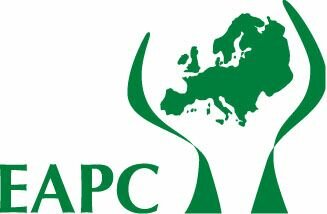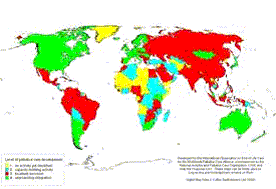|
HALF OF ALL COUNTRIES HAVE NO
|
|
|
FROM: New research published by The International Observatory on End of Life Care (IOELC) at Lancaster University has found that around half of the world’s 234 countries have no palliative care services available to their populations and one third have yet to take the first steps in planning to build service capacity. In those countries where hospice and palliative care services are present, provision is mostly localised, with only 15% of countries having achieved a measure of integration with mainstream healthcare service providers. The report, entitled Mapping levels of palliative care development: a global view(1), also reveals a strong correlation between palliative care provision and levels of human development, as measured by the United Nations Human Development Index (HDI)(2). Of the 35 countries where hospice-palliative care services are approaching mainstream integration, 29 have a high level of human development, while only one is described as having ‘low development’. Of the 78 (33%) countries with no identified hospice-palliative care activity, only two have a high level of human development. In the 80 countries with localised hospice and palliative care services there are many instances where services are mostly inaccessible to the whole population. In Pakistan, for example, there is only one service for a population of 158 million. This contrasts sharply with Gibraltar, where the service-to-population ratio is the lowest in the world at 1:14,000 (i.e. one service per 14,000 people). Revd Dr Michael Wright, who led the project, commented, “Despite increasing international calls for high quality end of life care to be recognised as a human right, there is clearly a long way to go before it is within reach of most of the people in the world. It is particularly unfortunate that countries where there is the most need, particularly those heavily affected by the AIDS epidemic, are often those with little or no hospice and palliative care services. “There are many barriers to service development; often palliative care is not regarded as a core healthcare service, which of course it is, and limited resources are not allocated to it. There can also be political or cultural opposition, for example to the use of morphine, and factors associated with a country’s geography, population and infrastructure can also throw up big challenges.” The goals of palliative care are to improve the quality of a seriously ill person’s life and to support that person and their family during and after treatment. Four groups The report was jointly commissioned by Help the Hospices in the UK and the National Hospice and Palliative Care Organization in the US. It builds on an IOELC study in Africa published in 2006 which put forward a four-part typology depicting levels of hospice and palliative care development. The following four groups were identified: no known hospice and palliative care activity Levels of development The European picture
Among 35 countries where hospice-palliative care is approaching integration with mainstream service providers, the ratio in the UK (widely regarded as the birthplace of the modern hospice movement) is 1:40,000, the best in Europe. With the exception of Portugal, Luxembourg and a few small countries such as Andorra, all countries in Western Europe are in Group 4. In Central and Eastern Europe, with the exception of Hungary, Poland, Romania and Slovenia, all countries are in Group 3. Azerbaijan has by far the poorest service to population ratio in Europe with only one service for its entire population of 8.41 million. Notes: (1) The full report is available online at http://www.nhpco.org/files/public/palliativecare/World_map_report_final-0107.pdf (2) Used since 1990 by the United Nations Development Programme in its annual Human Development Report, the Human Development Index gives a measure of a country’s development based on longevity, knowledge, and standard of living. Mapping levels of palliative care development: a global view was produced independently by the International Observatory on End of Life Care, in consultation with the funding bodies, Help the Hospices and the National Hospice and Palliative Care Organization. Its authors were the: The Revd Dr Michael Wright, PhD; Mr Justin Wood, MSc; Mr Thomas Lynch, MA and Professor David Clark, PhD. The report was produced for the World Wide Palliative Care Alliance (www.wwpca.net) to assist them in their advocacy work to make the case for hospice and palliative care globally.
|

